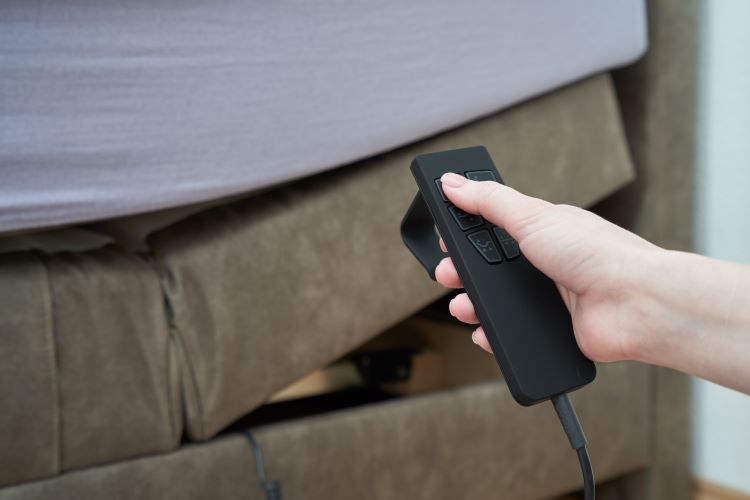2025 Electric Interior Blinds: Top Models, Pricing, and Why They're Worth the Upgrade
Discover the convenience and sophistication of electric interior blinds in 2025. From smart home integration to energy efficiency, this guide explores top models, pricing, and how these modern solutions outperform traditional manual blinds in functionality and style.

The evolution of window treatments has reached new heights with electric interior blinds becoming mainstream in residential applications. Modern electric blinds integrate seamlessly with smart home systems while offering precise light control and improved energy management. Understanding the current market landscape helps homeowners make informed decisions about upgrading from traditional manual options.
Benefits of Electric Blinds Over Traditional Manual Options
Electric blinds provide numerous advantages over conventional manual systems. The primary benefit lies in convenience, allowing users to adjust multiple windows simultaneously through centralized control systems. This proves particularly valuable for hard-to-reach windows or homes with extensive glazing. Additionally, electric blinds offer precise positioning capabilities, enabling optimal light control throughout the day without manual intervention.
The consistency factor cannot be overlooked. Electric systems maintain uniform positioning across multiple windows, creating a cohesive aesthetic appearance from both interior and exterior perspectives. This consistency extends to daily routines, as automated schedules ensure blinds operate at predetermined times regardless of occupant presence.
Energy Efficiency and Smart Integration
Modern electric blinds contribute significantly to home energy efficiency through intelligent automation features. Smart sensors can detect ambient light levels and outdoor temperatures, automatically adjusting blind positions to optimize natural lighting while minimizing heat gain or loss. This responsive behavior reduces reliance on artificial lighting and HVAC systems.
Integration with popular smart home platforms like Amazon Alexa, Google Assistant, and Apple HomeKit enables voice control and sophisticated automation routines. Users can create scenarios that coordinate blinds with lighting systems, thermostats, and security features. Advanced models incorporate weather data integration, pre-emptively adjusting positions based on forecasted conditions.
Understanding Electric Blind Pricing
Electric blind pricing varies considerably based on size, material quality, motor specifications, and smart features. Entry-level motorized systems typically start around $200-400 per window for basic roller or cellular designs. Mid-range options with enhanced materials and smart connectivity range from $400-800 per window. Premium systems featuring advanced fabrics, quiet operation, and comprehensive smart integration can exceed $1000 per window.
Installation costs add $100-300 per window depending on complexity and electrical requirements. Homes requiring new electrical connections or complex mounting situations may incur additional expenses. Battery-powered options eliminate electrical work but require periodic battery replacement, typically every 1-2 years.
| Product Type | Provider | Cost Estimation |
|---|---|---|
| Basic Motorized Roller | Hunter Douglas | $250-450 per window |
| Smart Cellular Shades | Lutron | $400-700 per window |
| Premium Automated Blinds | Somfy | $600-1200 per window |
| Solar-Powered Options | IKEA | $150-300 per window |
| Commercial-Grade Systems | Graber | $500-900 per window |
Prices, rates, or cost estimates mentioned in this article are based on the latest available information but may change over time. Independent research is advised before making financial decisions.
Installation Considerations and Maintenance Tips
Proper installation ensures optimal performance and longevity of electric blind systems. Professional installation is recommended for hardwired systems requiring electrical connections. Key considerations include power source proximity, mounting surface integrity, and clearance requirements for motor mechanisms.
Battery-powered systems offer installation flexibility but require accessible battery compartments for maintenance. Solar-powered options need adequate sunlight exposure for reliable operation. Wireless systems should be tested for signal strength throughout the intended coverage area.
Maintenance requirements remain minimal compared to traditional blinds. Regular dusting of fabric surfaces and periodic motor lubrication ensure smooth operation. Smart systems benefit from firmware updates to maintain compatibility with evolving home automation platforms. Battery replacement schedules should be monitored to prevent unexpected operation failures.
Top Electric Interior Blind Models of 2025
The 2025 market features several standout models across different price segments. Hunter Douglas PowerView continues leading the premium segment with whisper-quiet operation and extensive fabric selections. Their Duette Honeycomb shades offer superior insulation properties combined with reliable automation.
Lutron Serena shades provide excellent smart home integration with robust app control and voice command compatibility. Their cellular construction delivers effective light filtering while maintaining contemporary aesthetics. Somfy motorized systems excel in commercial applications but offer residential solutions with professional-grade reliability.
IKea Fyrtur roller blinds represent the budget-friendly segment without compromising essential smart features. These solar-powered options integrate with Ikea’s broader smart home ecosystem while maintaining affordability. Graber Virtual Cord systems bridge the gap between manual and fully automated options through innovative cordless designs.
Electric interior blinds represent a worthwhile investment for homeowners seeking enhanced convenience, energy efficiency, and modern functionality. While initial costs exceed traditional options, the long-term benefits through energy savings, convenience, and property value enhancement justify the upgrade. Careful consideration of specific needs, budget constraints, and installation requirements ensures optimal system selection for individual applications.




